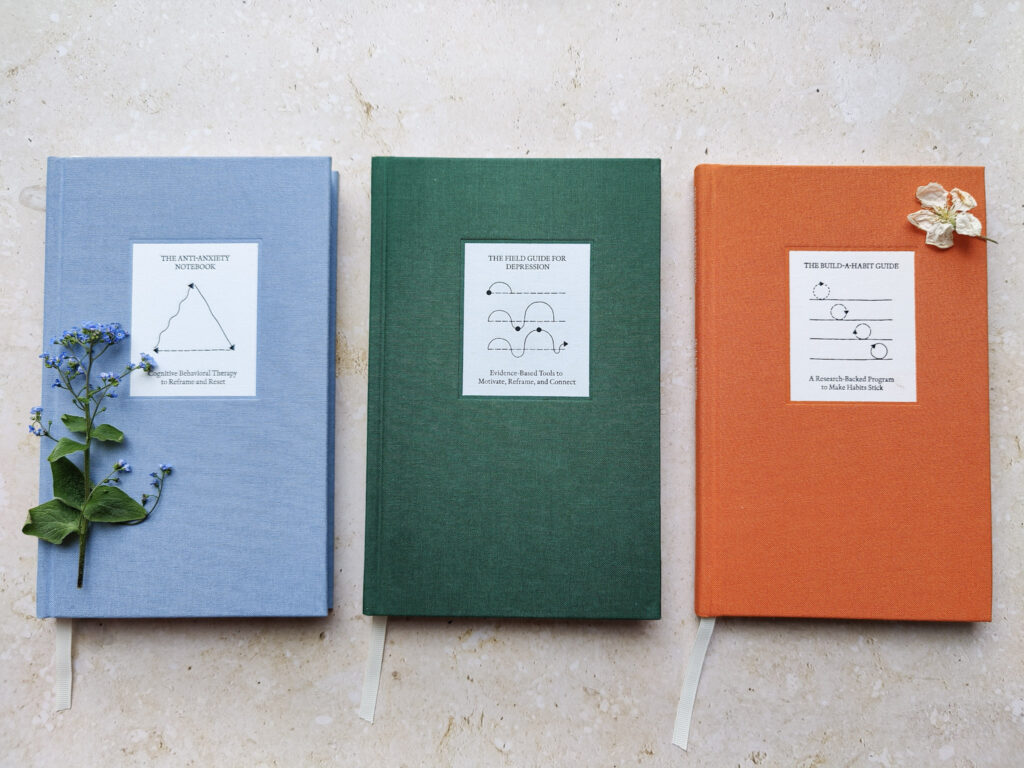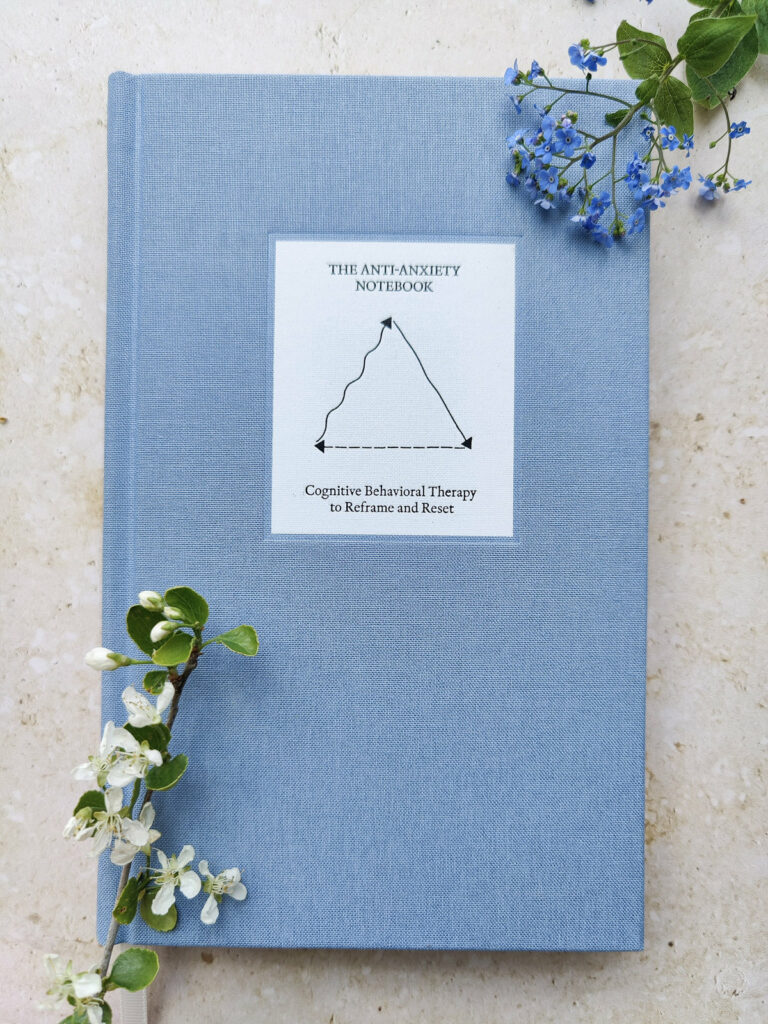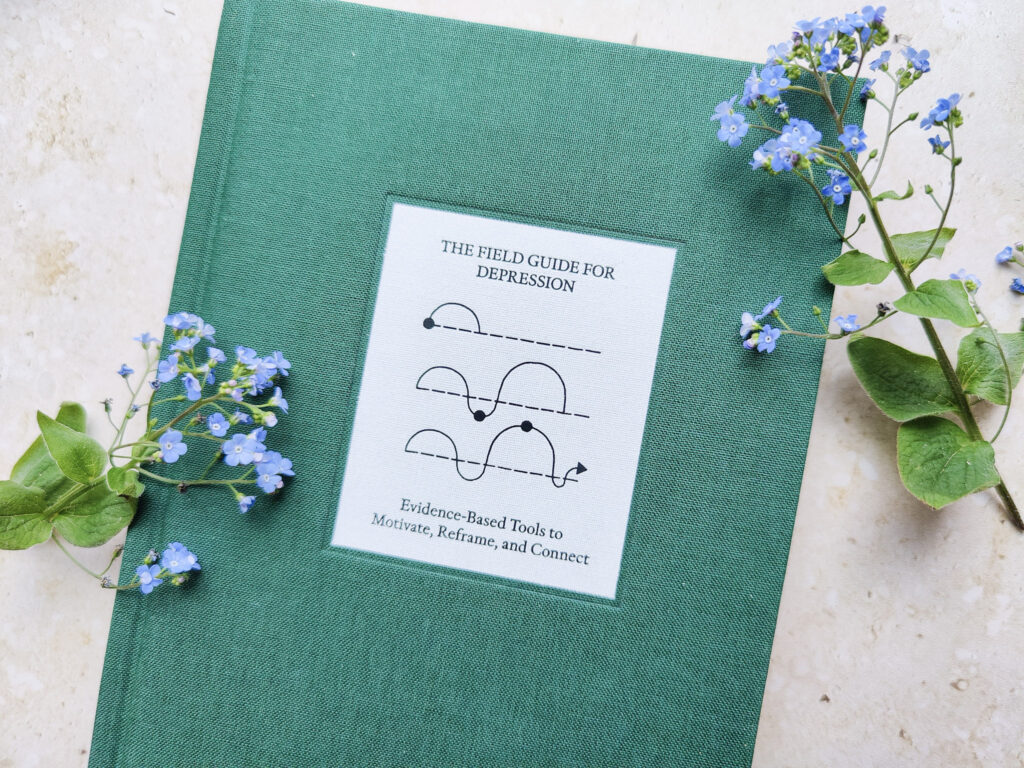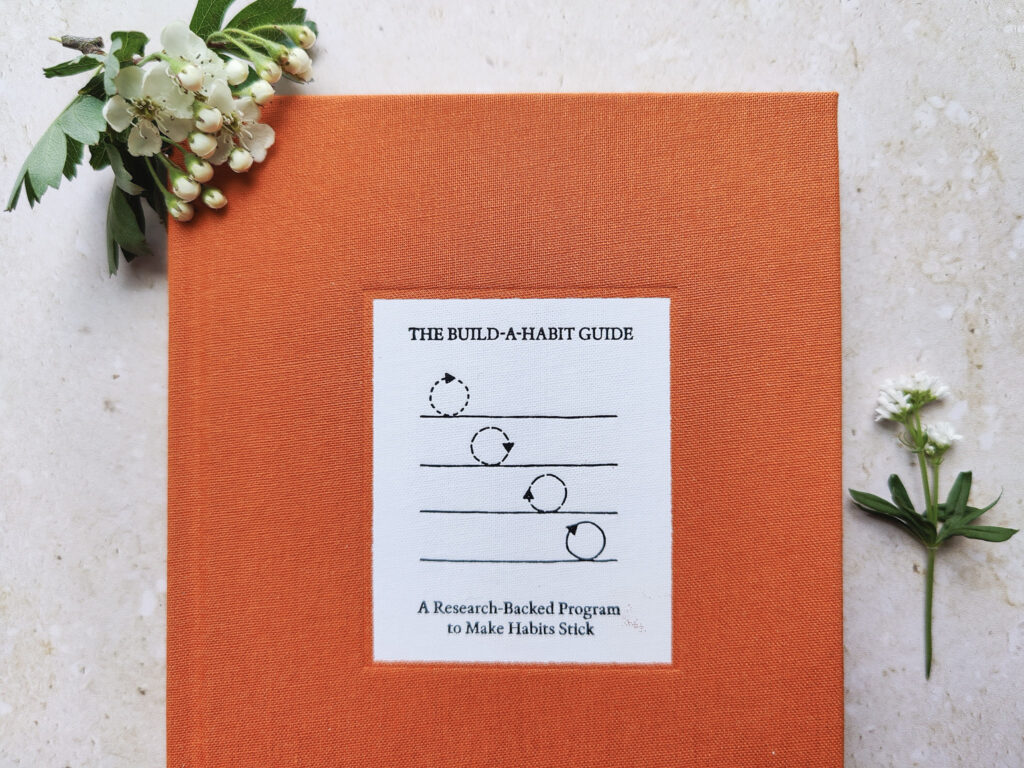Therapy Notebooks: gorgeous books for evidence-based self-care
I only share books I know and love. If you buy through my links, I may earn a commission (learn more).

Over the last decade, books have helped me so much with my mental health, and research suggests I’m not the only one.
Books can provide us with comfort, inspiration, and even guidance, and this couldn’t be more true than with these books by Therapy Notebooks.
I recently stumbled upon their books and instantly fell in love with all of them. I decided to treat myself to just three of the clothbound notebooks.
My first thoughts? They are even more beautiful and well-made in real life than any photos (especially my own), as well as being super helpful, evidence-based self-care tools.
Read on for my review of the Therapy Notebooks I’ve tried and tested this month:
A quick note: I’ve bought and used the notebooks myself (and am recommending them because I think they’re great), but I may receive a commission if you make a purchase through the links included.
What are Therapy Notebooks?
Therapy Notebooks feel like a therapy session in a book, really. They’re created by mental health professionals to help you access trusted and evidence-based tools at a lower cost than therapy, figure out which strategies work for you, and boost your mental health.
Who would I recommend Therapy Notebooks for? I think anyone who wants to boost their mental health, with or without a therapist, would benefit from these notebooks. I’ve done a fair bit of therapy myself in the past, and these would have been the perfect companions.
Although I’m no longer in therapy, I still need a little help every so often. So far, the notebooks have been fantastic at helping to reduce my mild remnants of anxiety and depression, as well as nudging my habits back on track.
The best Therapy Notebooks for evidence-based self-care
The Anti-Anxiety Notebook: Cognitive Behavioral Therapy to Reframe and Reset
I’d recommend The Anti-Anxiety Notebook for you if… you’re facing anxiety or struggling to switch off your thoughts.
As someone who’s had therapy for anxiety but now has it mostly under control, reading this has given me a welcome mental health top-up.
As Hod Tamir, PhD, the Lead Therapist behind the book explains, “our goal was to develop a resource not only supported by clinicians and science, but genuinely enjoyable to use.”
In the journal, you’ll practice becoming aware of the relationship between your thoughts and feelings, empowering you to challenge and adjust them over time.
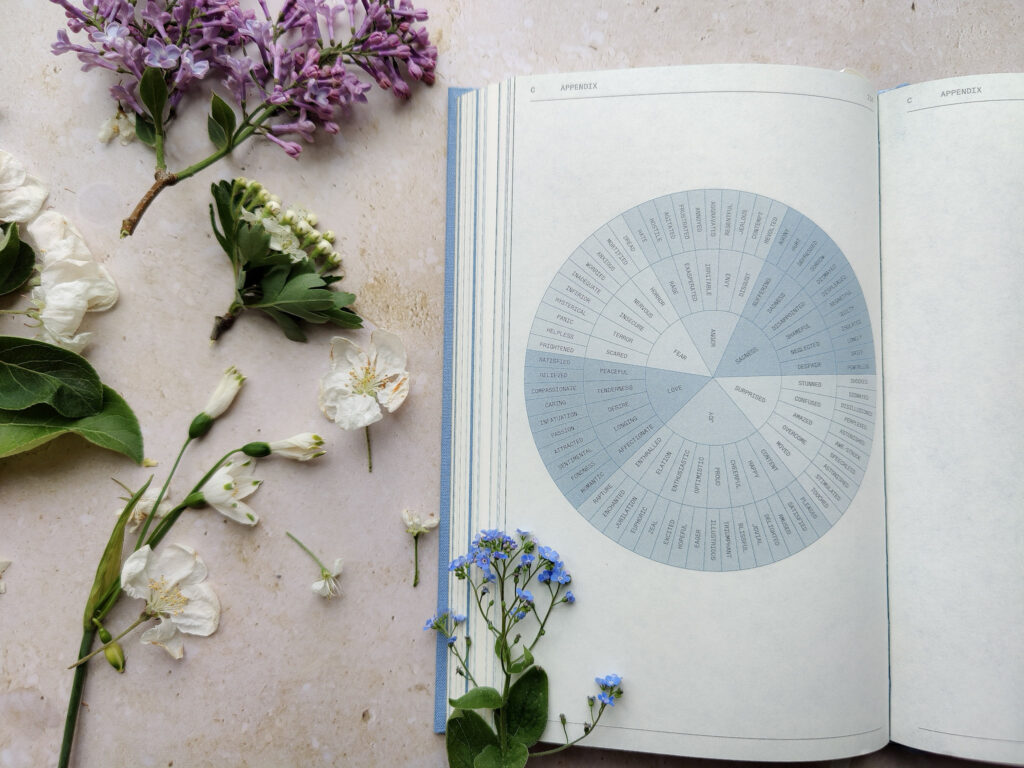
The notebook is based on Cognitive Behavioural Therapy (CBT), which is considered the gold standard of therapy for managing anxiety.
You can use the notebook whenever you feel anxious or stressed and however often you feel most comfortable – whether that’s daily or on an as-needed basis.
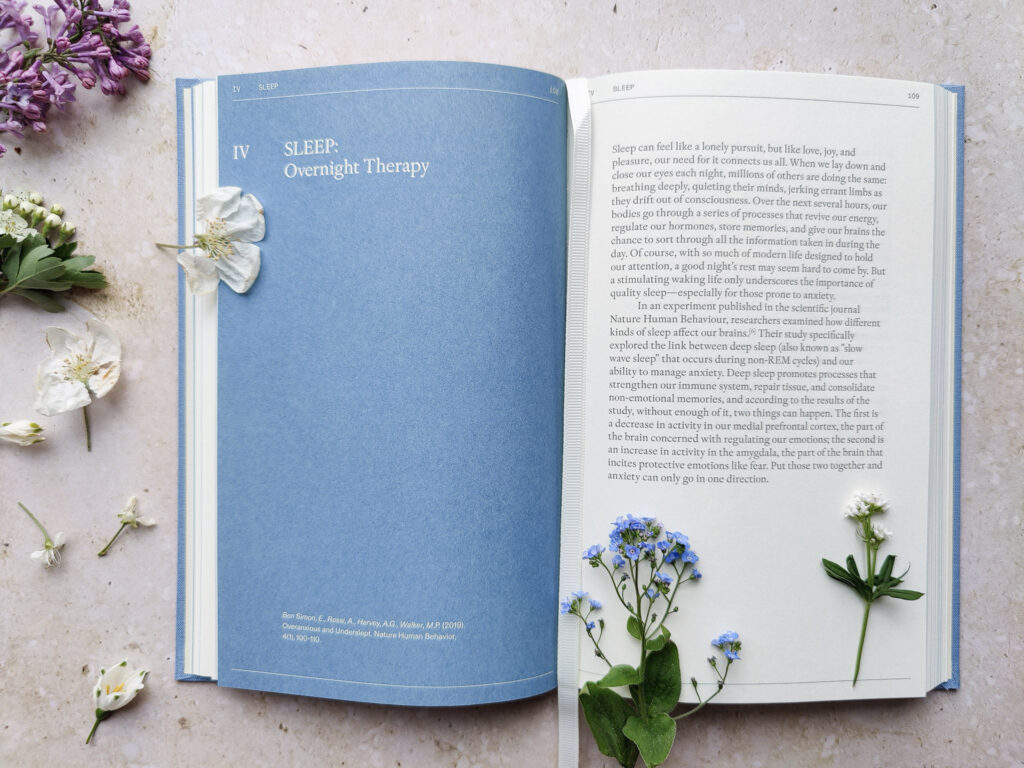
There’s space for 30 journal entries in the notebook, allowing you to describe a situation that made you anxious, outline what’s going through your mind, and recognise thought patterns. The book then guides you to challenge those thoughts.
The journal entries are interspersed with focus pages on specific tactics for anxiety. These include mindset tweaks, mindfulness exercises, strategies for better sleep, and ways to distract yourself from your anxiety.
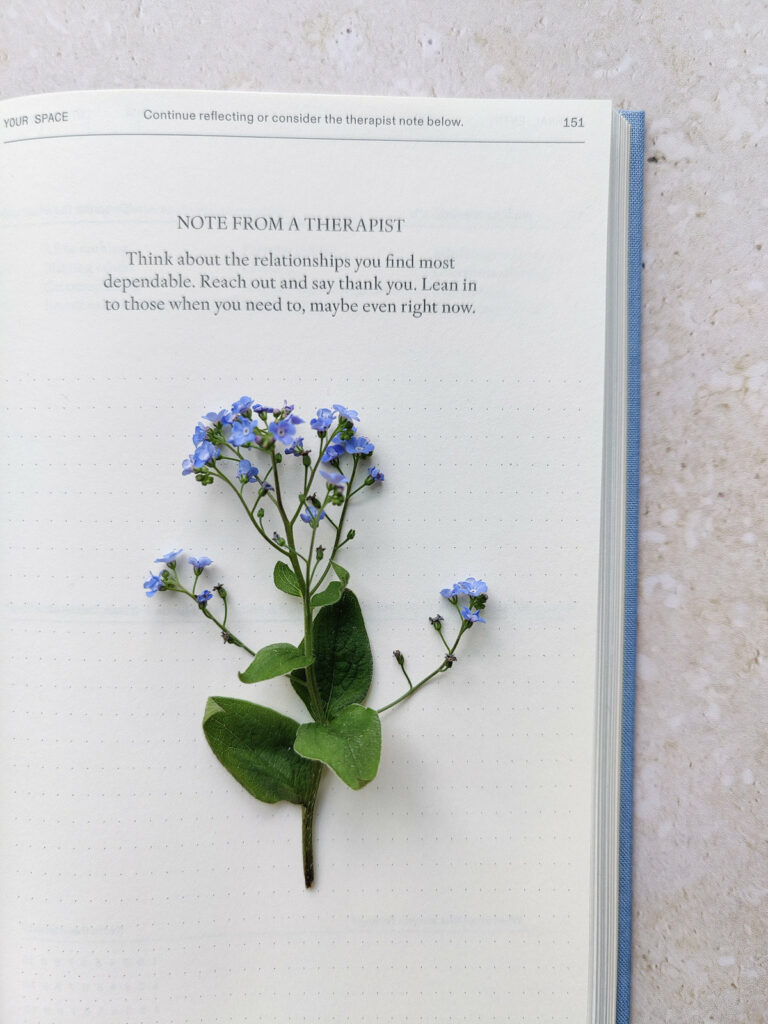
The Field Guide for Depression: Evidence-Based Tools to Motivate, Reframe, and Connect
I’d recommend The Field Guide for Depression for you if… you’re experiencing mild depression, can’t see a therapist right now, and want to take care of yourself when “the dark patches fall”, as Whitman described.
The Field Guide for Depression is a primer to some of the most effective tools for depression (five of them, to be precise), with the goal that you can discover the tools that work for you, rather than someone else dictating what is best.
As Diana Hu, PsyD and Hod Tamir, PhD explain in the introduction to the book, many people still lack access to therapy and trusted, evidence-based tools. As clinicians, this is their way of making these tools more accessible and helping more people feel better.
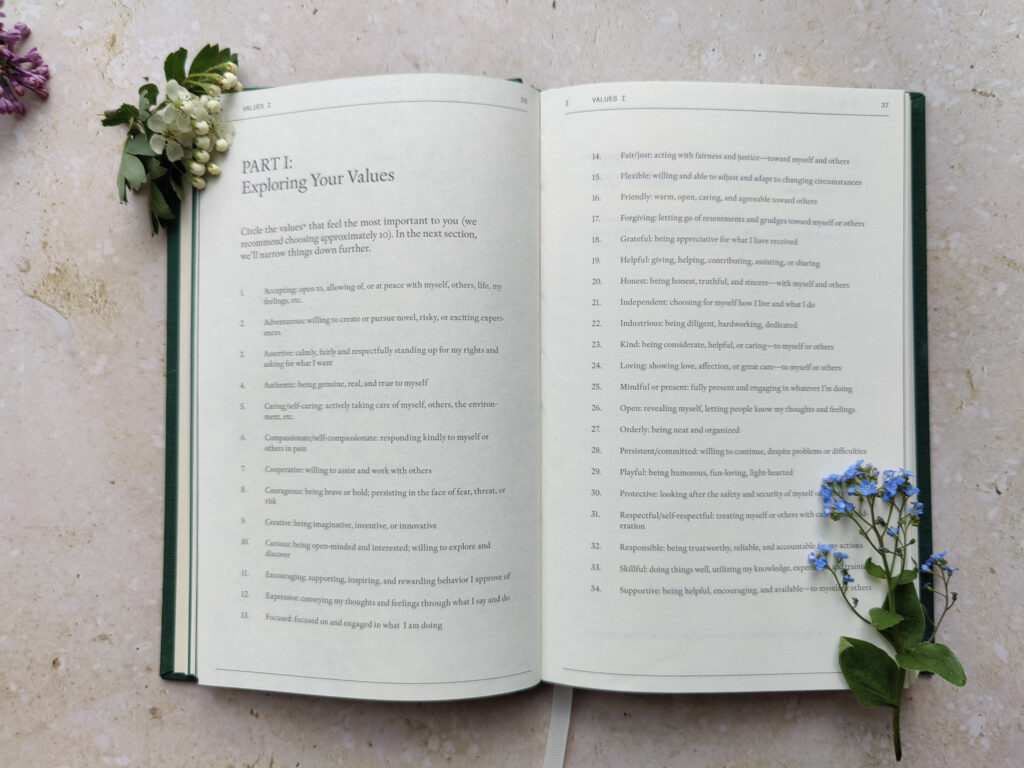
Each section of the book introduces a new evidence-based tool, guiding you to improve your motivation, rewrite your internal dialogue, and foster connection in your relationships.
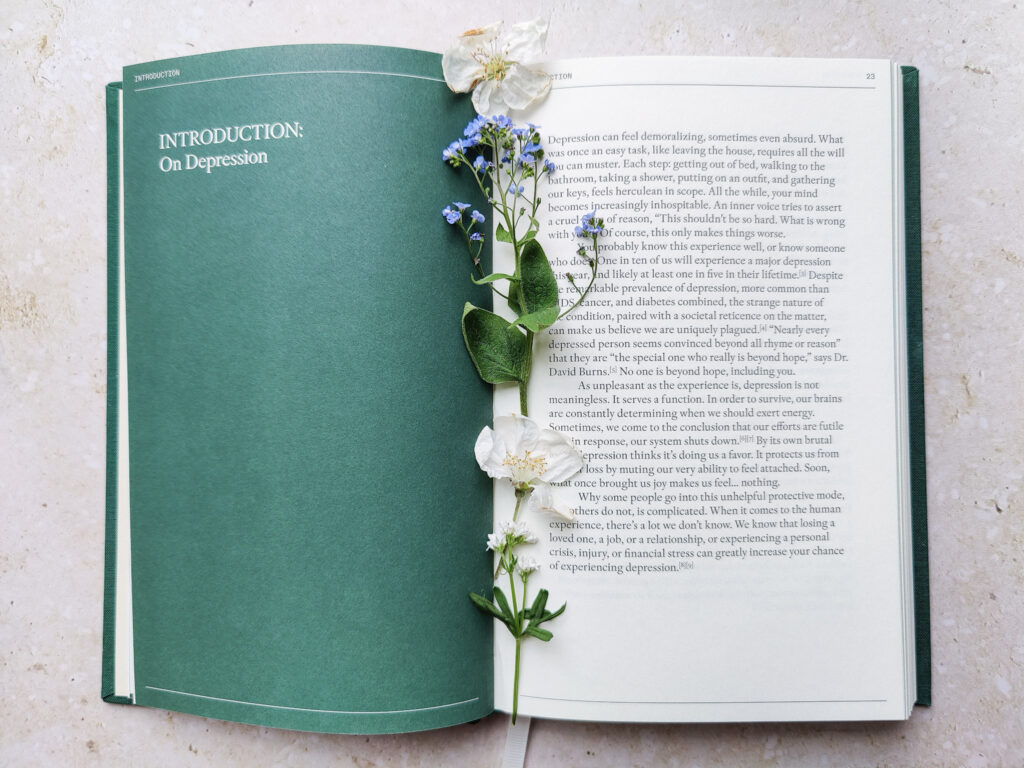
To help you get back on track, the book contains helpful resources including a Feelings Wheel to better express how you’re feeling and a list of self-care fundamentals. You can also use the Activity Logs, Thought Logs, and Reframing Logs as part of your daily routine.
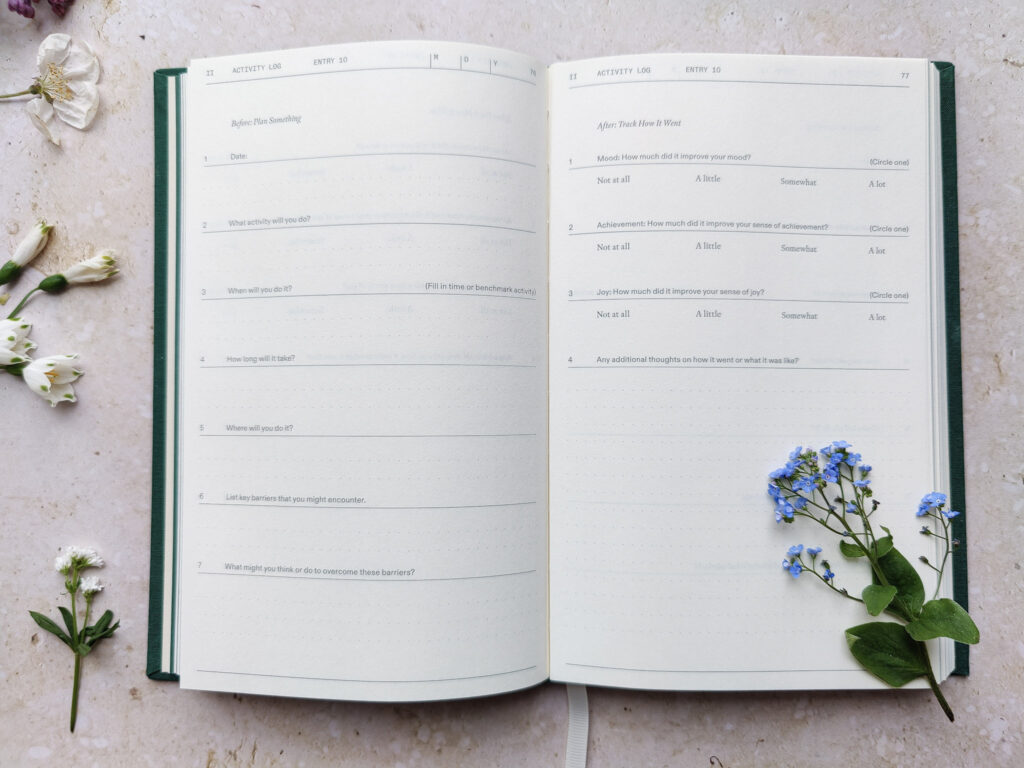
The Build-a-Habit Guide: A Research-Backed Program to Make Habits Stick
I’d recommend The Build-a-Habit Guide for you if… you want a beautiful notebook to motivate you in setting, adopting, and maintaining good habits.
The Build-a-Habit Guide is a 10-week guided program in a book, designed by behavioural scientist Asaf Mazar, PhD to help you master habit formation.
What habit do you want to form? Maybe it’s walking outside every day, reading a relaxing book before bed instead of browsing Twitter, or flossing. This book will help you to actually make the habit stick.
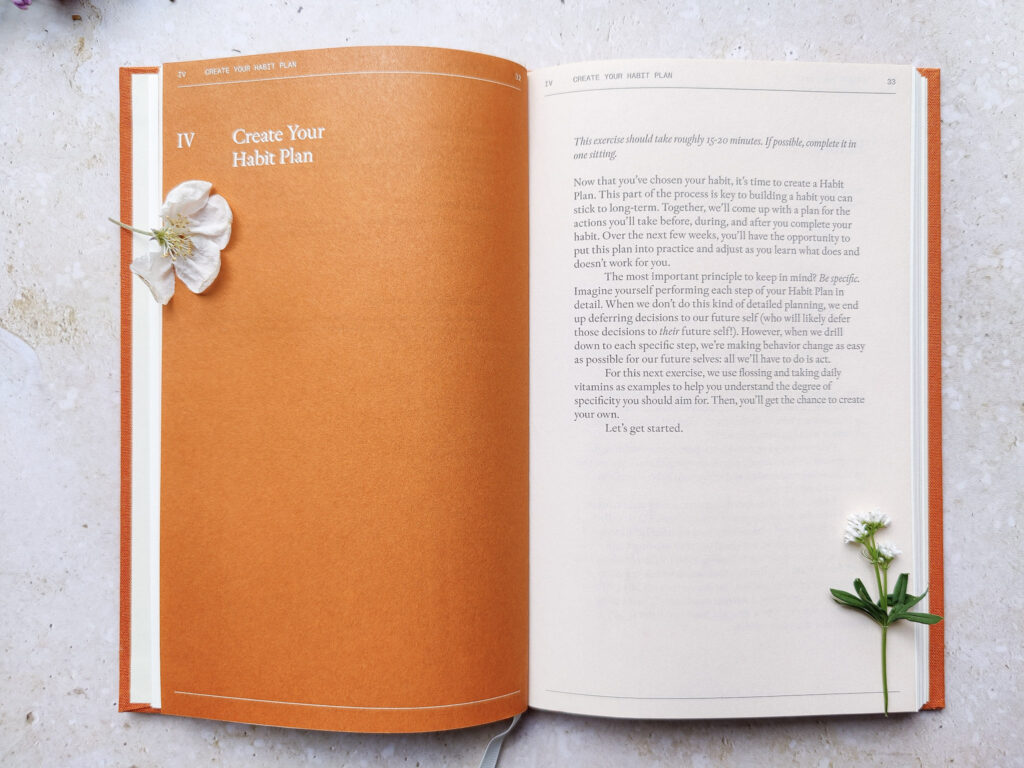
The Build-a-Habit Guide exists to help you put the theory to practice with easy-to-use habit-building tools you can apply to anything. The book includes guided pages to choose your habit, a plan to make it stick, and daily check-in entries to keep you motivated.
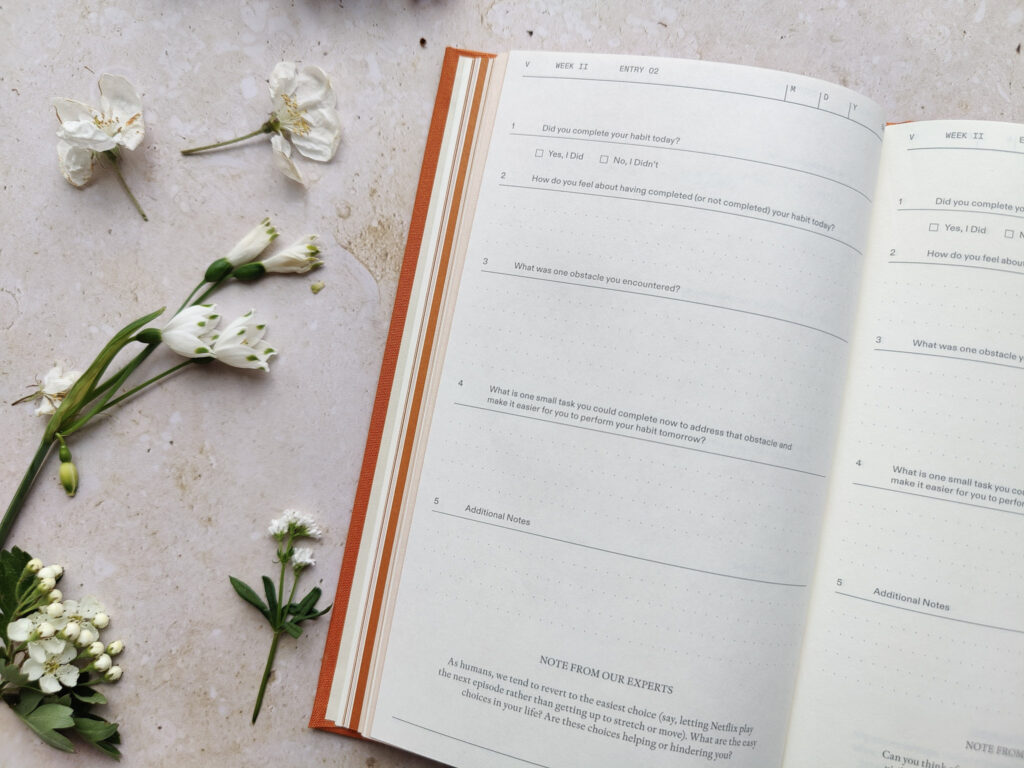
I’m using the book to help me take time every evening to roll out my yoga mat and take 10-15 minutes for the physio exercises I’m meant to be doing to help recuperate a knee injury, sometimes with some yoga or pilates in the mix too.
As the book explains, you can switch up the habit slightly each day. The key is to keep the starting point the same, such as rolling out your yoga mat or putting your exercise shoes on. On a day when you can’t be bothered, you can try and do a quick version of the habit instead.
It’s a fun book to develop a simple habit that sticks, tune into your intuition, and have a space to track your progress and reflect.
I’m so looking forward to using these notebooks more – and keeping them on my shelves for a mental health first aid kit. If you check them out, I hope you love them as much as I do.
You can browse the Therapy Notebooks here to explore all of the beautiful products in the series, including notebooks for insomnia, trauma, and more.
If you’re in the US, you can get free shipping, while international orders (including my own to Denmark) are shipped with Passport to include taxes and duties in the delivery cost.

